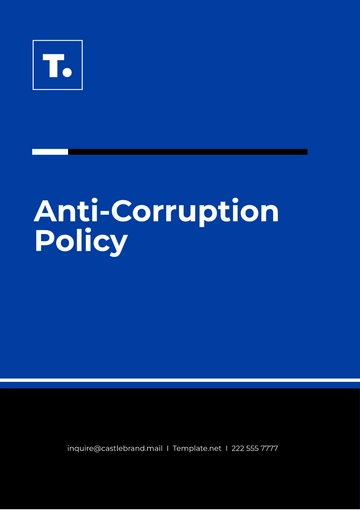Free Economic Policy Brief

Prepared By: [YOUR NAME]
[YOUR COMPANY NAME]
Executive Summary:
Youth unemployment remains a pressing challenge in many developing countries, posing significant economic, social, and political ramifications. This policy brief outlines key strategies to address this issue, including targeted education and skills development initiatives, entrepreneurship support, and labor market reforms.
Introduction:
Youth unemployment is a critical issue facing developing countries, with implications for economic growth, social stability, and human development. Despite efforts to address this challenge, rates of youth unemployment remain persistently high in many regions, necessitating comprehensive policy interventions.
Background:
Youth unemployment rates in developing countries have been consistently higher than those in developed economies due to various factors, including limited access to quality education, inadequate skills training, and insufficient job creation. Moreover, the COVID-19 pandemic has exacerbated these challenges, leading to widespread job losses and economic downturns in many countries.
Current Situation:
As of 2050, youth unemployment rates in developing countries averaged around 15%, significantly higher than the global average of approximately 6%. This disparity underscores the urgency of implementing effective policies to address youth unemployment and foster inclusive economic growth.
Challenges and Opportunities:
This table provides a clear visual representation of the challenges and corresponding opportunities associated with addressing youth unemployment, facilitating easy comparison and understanding for policymakers and stakeholders.
Challenges | Opportunities |
|---|---|
Mismatches between skills supply and demand | Enhancing vocational education and training programs |
Informal employment | Expanding access to finance and mentorship for young entrepreneurs |
Structural barriers to youth entrepreneurship | Strengthening public-private partnerships |
Limited job creation | Implementing targeted job creation initiatives |
Lack of social protection systems | Strengthening social protection systems |
Policy Analysis:
Proposed policy options include investing in education and skills development programs tailored to labor market needs, promoting entrepreneurship through access to finance and business support services, and implementing labor market reforms to enhance job creation and ensure decent working conditions.
Recommendations:
This table presents a structured overview of actionable recommendations for policymakers and stakeholders to address youth unemployment, allowing for easy reference and implementation planning.
Recommendations | Description |
|---|---|
Enhance vocational education and training | Invest in modernizing vocational education and training programs to align with emerging industry demands and equip youth with relevant skills. |
Expand access to finance and mentorship programs | Establish specialized funds and mentorship networks to support young entrepreneurs in accessing capital, developing business plans, and navigating regulatory hurdles. |
Foster collaboration between stakeholders | Facilitate partnerships between governments, educational institutions, and private sector employers to design curriculum that meets industry needs and provides work-integrated learning opportunities. |
Implement targeted job creation initiatives | Launch public works programs and invest in infrastructure projects that generate employment opportunities for young people, particularly in sectors with high growth potential. |
Strengthen social protection systems | Enhance social safety nets through measures such as unemployment benefits, skills development grants, and access to healthcare to support unemployed youth and facilitate their reintegration into the workforce. |
References:
This table succinctly lists the references used in the policy brief, providing readers with transparent sourcing of information and enabling further exploration of the cited literature.
Reference | Description |
|---|---|
International Labour Organization. (2050). World Employment and Social Outlook: Trends 2050. | Provides insights into global employment trends and challenges. |
World Bank. (2051). Youth Employment in Developing Countries: Challenges and Opportunities. | Offers analysis of youth employment issues and potential solutions. |
United Nations Development Programme. (2052). Youth and the Future of Work: Trends and Policy Implications. | Explores trends in youth employment and policy implications for the future of work. |
Contact Information:
[Your Company Name]
[Your Company Email]
[Your Company Website]
[Your Company Number]
Conclusion:
Addressing youth unemployment requires a multifaceted approach that addresses underlying structural challenges while seizing opportunities for innovation and collaboration. By implementing the recommended strategies, policymakers can empower young people to contribute meaningfully to economic development and social progress in developing countries.
Disclaimer:
The views and recommendations presented in this policy brief are those of the authors and do not necessarily reflect the views of any specific organization or government entity. Readers are encouraged to conduct further research and consult relevant stakeholders before implementing any policy decisions based on the information provided herein.
- 100% Customizable, free editor
- Access 1 Million+ Templates, photo’s & graphics
- Download or share as a template
- Click and replace photos, graphics, text, backgrounds
- Resize, crop, AI write & more
- Access advanced editor
Introducing the Economic Policy Brief Template from Template.net: Your go-to solution for crafting impactful economic analyses. This editable and customizable template empowers you to present data with precision and clarity. Seamlessly tailor content to suit your needs, with the added bonus of being editable in our AI Editor too. Elevate your reports effortlessly with this versatile tool.
You may also like
- HR Policy
- Restaurant Policy
- Company Policy
- Accounting Policies and Procedures
- Website Policy
- Privacy Policy
- Safety Policy
- School Policy
- IT and Software Policy
- Law Firm Policy
- Construction Policy
- Interior Design Policy
- Travel Agency Policy
- Education Academic Policy
- Security Policy
- Real Estate Policy
- Expense Policy
- Software Policy





























